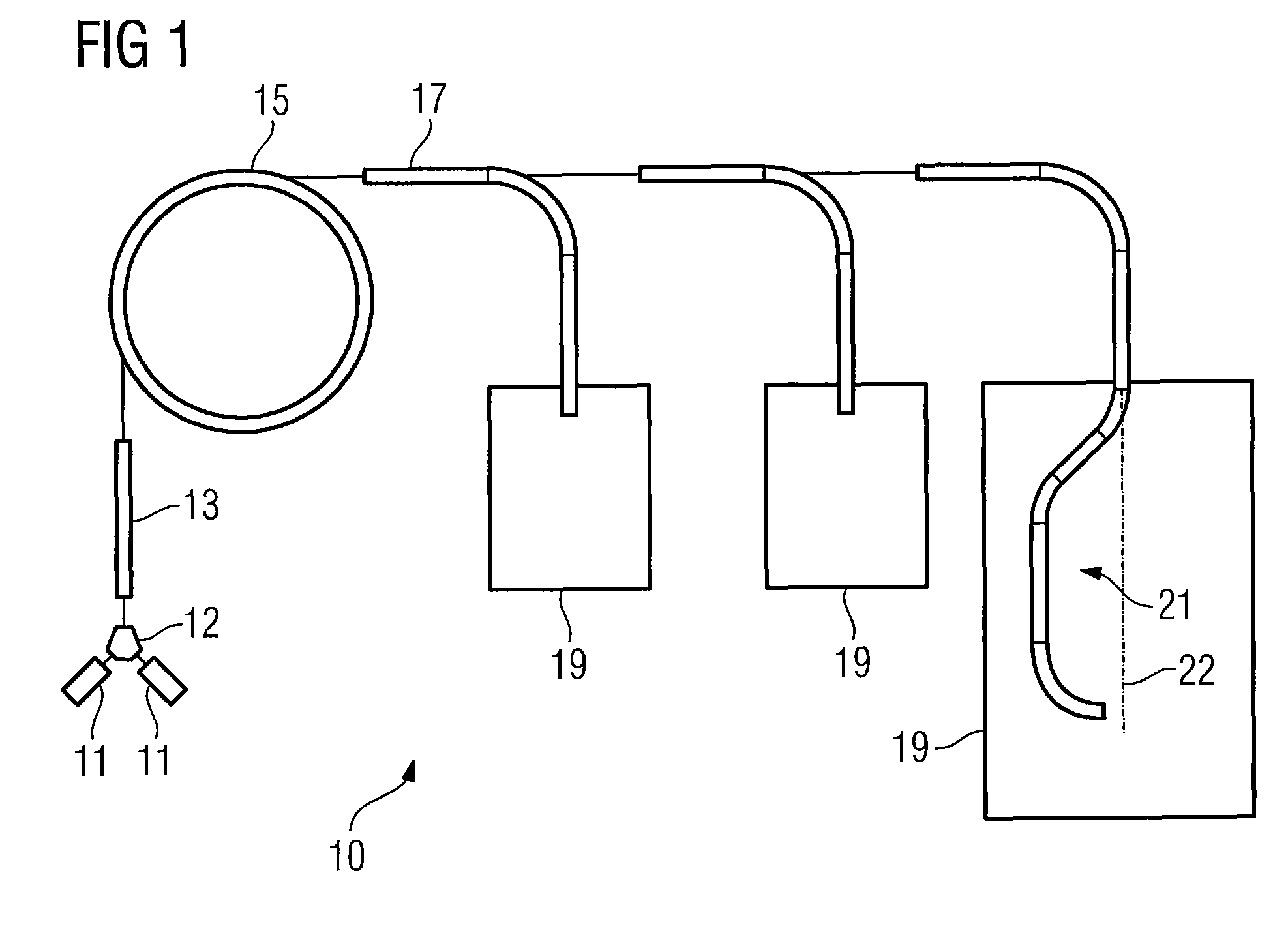Carrying out and monitoring irradiation of a moving object
a technology for moving objects and irradiation, which is applied in the field of carrying out and monitoring irradiation of moving objects, can solve the problems of poor image quality of other planes in the three-dimensional data record, and achieve the effect of fast movement of x-ray detectors, particularly efficient determination of objects, and flexible positioning
- Summary
- Abstract
- Description
- Claims
- Application Information
AI Technical Summary
Benefits of technology
Problems solved by technology
Method used
Image
Examples
Embodiment Construction
[0029]FIG. 1 shows a particle therapy unit 10. The particle therapy unit 10 may be used for the irradiation of a body, such as a tumorous tissue, using a particle beam.
[0030]The particles may be ions, such as protons, pions, helium ions, carbon ions or other types of ion, for example. The particles may be generated in a particle source 11. Two particle sources 11 may generate two different types of ions, as shown in FIG. 1. It is possible to switch between the two types of ion within a short time interval. A solenoid 12, for example, is used for switching. The solenoid 12 may be disposed between the ion sources 11 and an accelerator 13. The particle therapy unit 10 may be operated, for example, with protons and carbon ions at the same time.
[0031]The ions generated by the one or more ion sources 11 and optionally selected using the solenoid 12 are accelerated to a first energy level in the pre-accelerator 13. The pre-accelerator 13 is a linear acceleration (LINAC for LINear ACcelerat...
PUM
 Login to View More
Login to View More Abstract
Description
Claims
Application Information
 Login to View More
Login to View More - R&D
- Intellectual Property
- Life Sciences
- Materials
- Tech Scout
- Unparalleled Data Quality
- Higher Quality Content
- 60% Fewer Hallucinations
Browse by: Latest US Patents, China's latest patents, Technical Efficacy Thesaurus, Application Domain, Technology Topic, Popular Technical Reports.
© 2025 PatSnap. All rights reserved.Legal|Privacy policy|Modern Slavery Act Transparency Statement|Sitemap|About US| Contact US: help@patsnap.com



